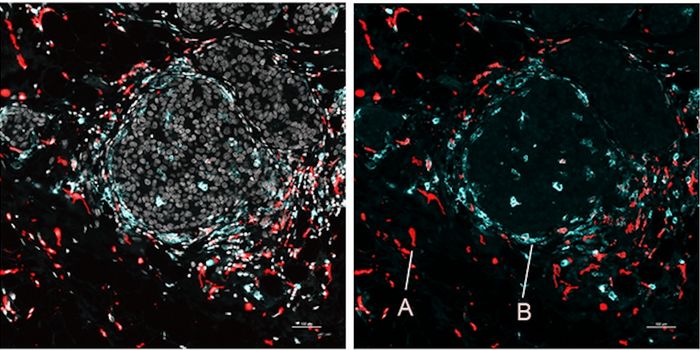Western Blot
The western blot (sometimes called the protein immunoblot) is a widely used analytical technique used in molecular biology, immunogenetics and other molecular biology disciplines to detect specific proteins in a sample of tissue homogenate or extract. In brief, the sample undergoes protein denaturation, followed by gel electrophoresis. Synthetic or animal-derived antibodies are created that recognise and bind to a specific target protein, known as the primary antibody. The electrophoresis membrane is washed in a solution containing the primary antibody, before excess antibody is washed off. A secondary antibody is added which recognises and binds to the primary antibody. The secondary antibody is visualised through various methods such as staining, immunofluorescence, and radioactivity, allowing indirect detection of the specific target protein.
What's Popular in Western Blot
-
FEB 05, 2024ImmunologyIntroduction Proteins are essential molecules in the human body that construct the building blocks of life. Long chains ...Sponsored By: MilliporeSigmaOCT 17, 2023CancerCutaneous squamous cell carcinoma (cSCC) is a common form of skin cancer often caused by chronic exposure to ultraviolet ...Written By: Greta AnneAUG 09, 2023Genetics & GenomicsThere are about 20,000 genes that encode for protein in the human genome, and we don't know much about many of them. ...Written By: Carmen LeitchJAN 03, 2023Genetics & GenomicsResearchers can easily assess what genes are being expressed in a tissue by using a method like RT-PCR that precisely an ...Written By: Carmen LeitchSEP 06, 2022MicrobiologyIntroduction Monkeypox virus (MPXV) is an old virus that has recently grabbed attention because of its emergence in unco ...Sponsored By: Sino Biological
-
MAR 20, 2024 | 8:00 AMLuminex and Thermo Fisher Scientific are excited to feature two presentations highlighting the advanced features of the Invitrogen™ Luminex® xMAP® INTELLIFLEX™ DR-SE inst...APR 11, 2023 | 8:00 AMC.E. CREDITSDate: April 11, 2023 Time: 8:00am (PDT), 11:00am (EDT), 5:00pm (CEST) Duchenne muscular dystrophy is caused by mutations in the dystrophin encoding DMD gene that disrupt the reading frame. M...NOV 29, 2022 | 10:00 AMDate: November 30, 2022 Time: 9:00am (PST), 12:00pm (EST), 6:00pm (CET) Western blotting is a commonly used analytical technique in protein analysis. However, the standard manual workflow fr...NOV 07, 2022 | 9:00 PMDate: November 8, 2022 Time: 1:00pm (SGT), 12:00pm (EST), 6:00am (CET) Antibodies are vital tools in many of the laboratory techniques that are used...SARS-CoV-2 testing is now facing increasing challenges in the face of an ongoing pandemic with the emergence of new variants and waning vaccine immunity. Increasing evidence supports the cor...Speaker: Sean Taylor, MBA, PhD
Sponsored By: Thermo Fisher Scientific
Sponsored By: Thermo Fisher Scientific
Sponsored By: Thermo Fisher Scientific
-
SEP 08, 2021 | 6:00 AM PDTLuminex's xMAP® Technology enables the evaluation of up to 500 analytes simultaneously in a single well, known as multiplexing. xMAP Technology uses color-coded microspheres as the substrate...Western blot analysis is a method widely used in the lab today because of its versatility in detecting and measuring specific target proteins in a sample. However, in recent years the reprod...OCT 10, 2018 | 6:00 AM PDTThe 6th Annual Event in the Cancer Research & Oncology Week Virtual Event Series will take place October 2018....OCT 03, 2018 | 6:00 AM PDTLabroots invites you to the 1st Annual Event in the CRISPR Virtual Event Series! With continued adoption and integration in research labs...SEP 17, 2018Improve your protein research knowledge by joining our 7 Steps of Protein virtual eventThe 3rd annual 7 Steps of Protein virtual event is taking place around the world on Tuesday, Septemb...


























